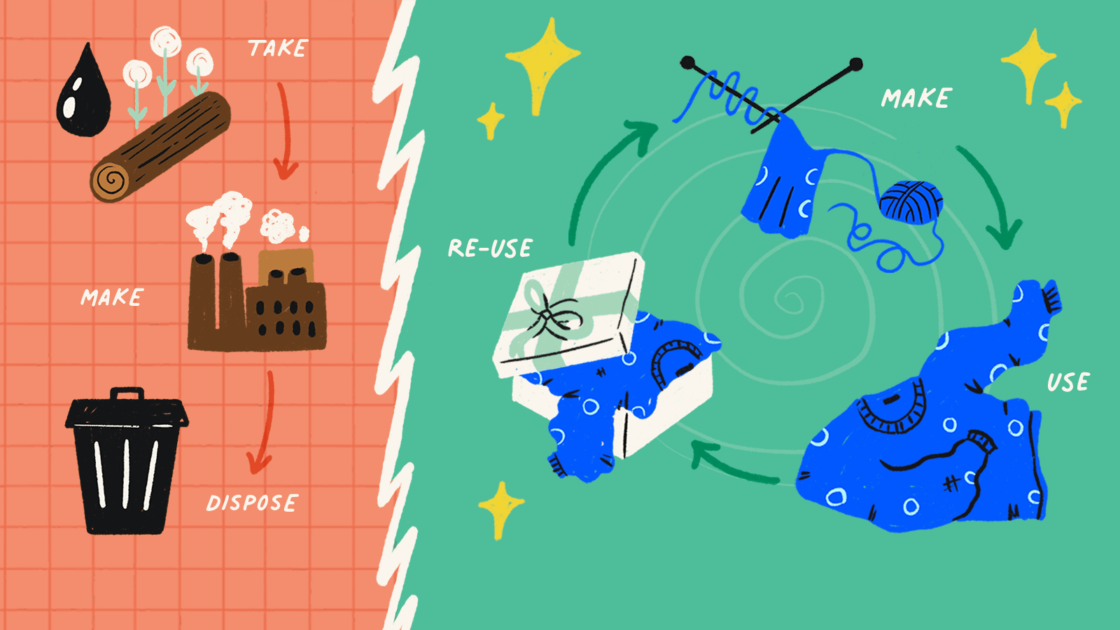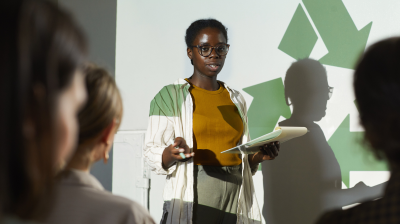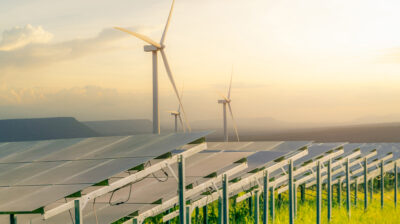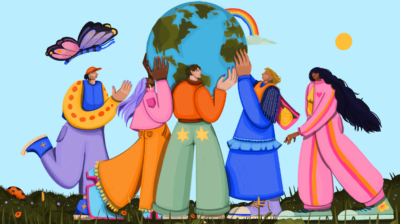How can we solve our waste issue with the Circular Economy?
Find out how we can solve our issue with waste by moving from a linear economy of ‘take make waste’ to a circular economy.


Did you know that in Ireland we produce over 14 million tonnes of waste every year? This includes food waste, garden waste, industrial waste (waste from manufacturing), construction and demolition (buildings), old technology, furniture, and clothes.
This isn’t just an Irish issue, but a worldwide one. The world generates around 2.01 billion tonnes of household waste every year. Although waste is a global issue, a small number of high income countries, making up 16% of the world’s population, contributes to 34% of worldwide waste, according to the World Bank.
Over a third of the world’s waste is not managed in an environmentally safe way. Poor waste management plays a role in climate change and pollution, it damages our natural environment and the different plants, animals and other organisms that make up our ecosystems.
However, it doesn’t need to be this way. There are solutions to our problems with waste, and moving towards a circular economy is one of those solutions.
Why do we waste so much?
A lot of our essential daily items were designed to be used once or twice then thrown away, fuelling a consumer driven market that encourages the average consumer to spend money. Disposable razors, food packaging and paper towels are examples of everyday items that are designed to be disposed of and replaced. Even things we own for a longer period of time, like phones and computers, are often designed to function optimally for a few years before you need a new one.
Take, make, waste – the linear model
This system of waste is a symptom of the “take, make, waste” economy that we operate in. This is also known as a linear economic model.
In a linear model, resources are taken from the planet, such as oil to make plastic, wood to make paper or cardboard, and cotton to make clothes. They are used to create disposable products and packaging, and then thrown away when they’re no longer needed.
This also means the products we buy are often not built to last, because the manufacturer wants you to spend more money replacing it. This is called planned obsolescence.
Alternative to the linear model
Reusable alternatives to disposable products, like reusable water bottles and coffee cups, have become more popular over the last number of years. However, while these individual choices can help to signal the need for change, we also need to change the system and move away from this linear model.
This is where a circular economy comes in.
What is a circular economy?
A circular economy is an alternative to the linear economic model, or the “take, make, waste” system. In a circular economy, products are designed to create less waste in manufacturing, be longer lasting, easily repaired, reused, upgraded or passed down. The circular economy is based on keeping materials in use for as long as possible and aims to lower our consumption of natural resources and also lower our output of waste. Did you know that Ireland has a National Centre for the Circular Economy?
Avoiding the cycle of dependency on raw materials
The world’s population is increasing and so is the demand for raw and finite materials (resources that will eventually run out) like oil, metal and coal. These resources are then used to make other materials like plastic, which is made from petroleum (oil). The supply of these materials is limited, which means we will need to find ways to make both existing and new products last longer in order to provide for everyone.
Using raw materials has a negative impact on the environment as it increases emissions of Carbon Dioxide (CO2), a greenhouse gas that warms the atmosphere. 73.2% of the world’s greenhouse gas emissions come from energy used in electricity, heat and transport, according to Our World in Data. Fossil fuels (like oil, gas, coal and peat) are commonly used to fuel these sectors. In a circular economy the use of these resources would be minimised.
Designing to avoid waste
In a circular economy the main goal would be to design all products, from technology to building blocks, to keep their value over time. This means focusing on creating high-quality products, and creating as little waste as possible throughout the manufacturing, production and consumption processes.
Products would also be designed to make it easier to repair them over time, and to reuse the parts to make other products. The right to repair is a movement worth checking out. In the near future, we should expect improved designs like interchangeable chargers for mobile phones and devices.
Keep using what we already have
Instead of throwing things away and wasting resources, a circular economy encourages us to keep using what we already have, finding ways to repurpose and upcycle. This means using products to the end of their life cycle, having things repaired, access to spare parts and having the option to recycle the materials when the product no longer works. Having the option to properly dispose of items like packaging, food and other materials is important, as it helps to avoid these things going to landfill. In other European countries, such as Spain, there are preparations for re-use targets, where items must be redirected from landfill, to be repaired and resold.
By keeping materials and products in use for longer, we can create change and encourage new sustainable ideas, generate further jobs for repairing and recycling items, and encourage competition between businesses to make good quality products. We also keep skills alive such as upholstery, repairing, and specialised skills for IT equipment.
Restoring nature
A circular economy also has the potential to reduce the world’s greenhouse gas emissions and take pressure off the environment. In a circular economy, we would use fewer natural resources and produce less waste. This would give nature an opportunity to restore its ecosystems which are made up of plants, animals, and other organisms. Investing in renewable energy like solar panels, wind turbines and hydroelectric power, and moving away from fossil fuels can give habitats like bogs, forests and oceans a chance to recover.
Examples of a circular economy
Here are some examples of how a circular model might look:
Clothes
Instead of being made to fall apart and discolour after a few months, an item of clothing like a t-shirt could be made with good quality natural fibres in a staple style. It could be used for many years before being passed on to someone else or re-designed or upcycled to make another item (such as a bag). Nothing would go to waste from the original t-shirt.
Food
According to the EPA, every household in Ireland is responsible for 150kgs of food waste per year. According to the United Nations, if food waste were a country, it would be the third largest global greenhouse gas emitter.
In a circular food economy, food products would be free from any packaging bacteria, microorganisms, parasites or toxic substances, so that it can be composted and returned to the soil as fertiliser. Food by-products (other products created as a result of food production) could also be used for making new materials for clothes or other food products.
You can minimise your own food waste by separating food from your normal waste into a food compost or brown bin if one is available to you, by making smaller portions to minimise scrapings, and buying only what you need. You can also freeze food to avoid wastage. There are lots of tips available on Stop Food Waste.ie
Plastic
The way we currently use plastics, within a linear model, is very wasteful. Millions of tonnes of plastic end up being burned and in landfills. Between 8 and 14 million tonnes end up in the ocean every year, threatening ecosystems and a huge source of food.
In a circular economy, people, countries and businesses would have a different relationship with plastic. Firstly, we would reduce our consumption and spending habits, therefore reducing the need for single use plastics in packaging. We would reuse plastic where possible. We would have improved recycling. Designing replacements for plastic could also be part of the circular solution, like compostable packaging and reusable containers.
How can we achieve a circular economy?
Moving towards a circular economy is the future. It will require all of us to make changes at different levels of society. The first step is knowing that there is an alternative to the way we currently do things. You can help by speaking to friends and family about the idea of a circular economy, and reaching out to business leaders and politicians to let them know you want to see change.
There are also many small ways you can implement the idea of a circular economy into your own life. By trying to use up all the food you buy, avoiding items with excess packaging, opting for reusable packaging. You could also shop second hand where possible, swap clothes, borrow items, and upcycle furniture. There are places like The Rediscovery Centre, or your local library where you can learn upcycling and mending skills. We can all start to take a step in the right direction.
Cover image by Cathy Hogan






